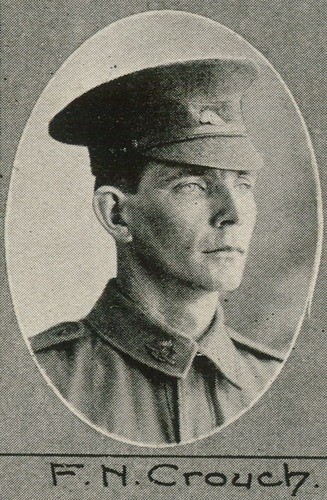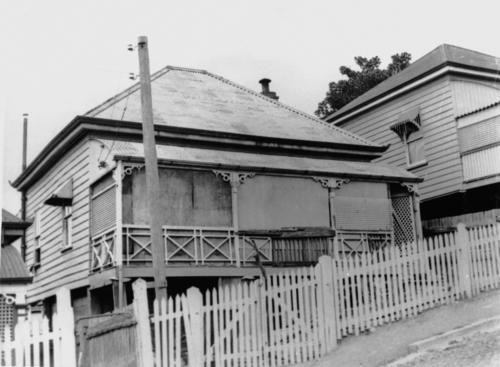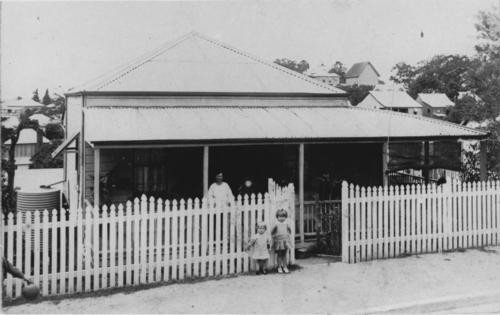An extra inhabitant in the house: Does your house have a “silent partner”?
By Administrator | 5 October 2017
State Library is often asked to do house histories. Most people who ask would like to know specific information about who has lived in their house in the past while others simply want to know what their house was called.
Some of our enquirers, however, have another interest – to find out the identity of the ghost who is living in their house. An old house in Warwick reportedly had a woman who walked down the corridor in high heels every night. Some home owners swore to have seen the contents of cupboards moving before their eyes (with no apparent rodent assistance) while others recalled a fading image sitting at the front door, or at the end of a corridor. Individuals have reported doors opening and closing without assistance, and the creaking of floors when there was nobody present. Some of these phenomena can be explained by the expansion and contraction of old wooden houses, shifting iron rooves, and draughts and airflow between old building materials.
There are events, however, that some believe are inexplicable such as residents of these properties reporting that they had seen visions of people. Who are these extra inhabitants? Did they live in the house before and have an awful experience or death that meant they could never leave the house? Although I am not convinced by such theories, I had a recent enquiry that did make me wonder. The enquirer requested to know who the incorporeal World War 1 soldier was who frequented the house in which she lived. In support of these sightings, the same figure had been seen independently by the neighbour, also living in a small wooden cottage just a metre away from the first. The young man they had both seen was fair haired, and definitely in a uniform that appeared to be from WW1.

F.N. Crouch, one of the soldiers photographed in The Queenslander Pictorial, supplement to The Queenslander, 1916. John Oxley Library. Negative number: 702692-19160408-s0024-012
State Library has Post Office Directories, maps, electoral rolls, housing plans, suburb histories and histories of families, all of which are used to undertake house histories. The street in Red Hill where the cottages were located was a working class neighbourhood, with many people who worked as carters, draymen, or wharf labourers, as well as tradesman. Yet in just one street, every house had a story to tell – often a sad story. One man had to leap out of his window as his house caught fire, whilst his neighbour fell off his dray at Roma Street markets and did much damage to his shoulder. The next neighbour was unfortunately killed by a large load which fell on him at the wharves. In the middle of the street was a house that was a regular source of commotion – the owner’s wife had been shot at while many of the other inhabitants regularly attended court for an array of bad behaviour. Across the street, a young teenager drowned in the Brisbane River.

House in Red Hill, Brisbane, 1944. John Oxley Library. Negative number: 44053
Then, to my amazement, I found information about an individual who could perhaps be the additional inhabitant of the cottage – call him a ghost if you like. Next door to the cottage where the ghost was originally seen, there had lived a man who had been a soldier in WW1 and was badly burned and gassed in France. Never quite himself again, and missing the sight of one eye, he nevertheless married and had two children, working in Brisbane as a clerk. Checking his service records, I found he was fair haired and blue eyed. In 1931, he unfortunately took his own life by hanging himself, underneath the cottage where his ghost had been seen. Interestingly, those who had seen the ghost reported that they only ever saw him from the knees up. Yet there were no leg injuries in his war record. Could this have been because he chose to step off a box (reported to be knee high) in his final moments. It was a very sad ending indeed for a brave soldier and an indication of the harsh realities of life after the war for our WW1 diggers.
Brisbane has many known ghosts – Captain Logan’s ghost – reportedly seen waving at the convicts from where QPAC now is, but upon crossing to collect him in the punt, both he and his horse had vanished. Logan was already dead at the time he was seen. The Tower Mill, the Speaker’s room in the Parliament, and Government House are all rumoured to have an extra inhabitant – a ghostly presence.
Old worker’s cottages hold history in their floorboards. Do these cottages have an extra inhabitant – a ghost from the past?

Cottage in 25 Confederate Street, Red Hill, Queensland, ca. 1925. John Oxley Library. Negative number: 29824
Does your house have a history? Have all of the past inhabitants moved on, or are some still lingering, so to speak. It is not only grand establishments that appear to have ghosts – our enquiries show that many ordinary cottages appear to have another presence still inhabiting the dwelling. House histories have many purposes – for those undertaking renovations, they are wonderfully rich sources of information. For others, they are the means to knowing when their home was built, and a way to return the original name of the dwelling to the front door. Then there are those who sense history in their homes and want to know who else has lived a life within the same four walls.
Christina Ealing-Godbold
Senior Librarian
More Information:
House History Webcast - /audio-video/webcasts/recent-webcasts/house-histories-pt-1
Comments
Your email address will not be published.
We welcome relevant, respectful comments.